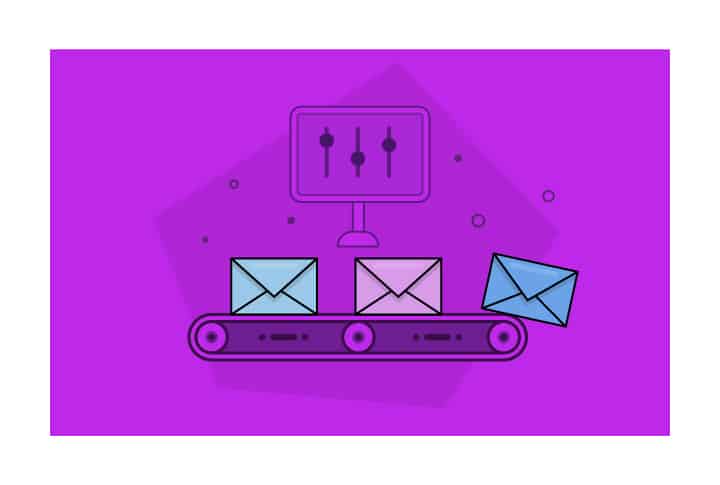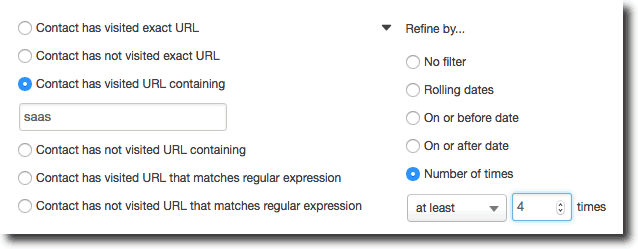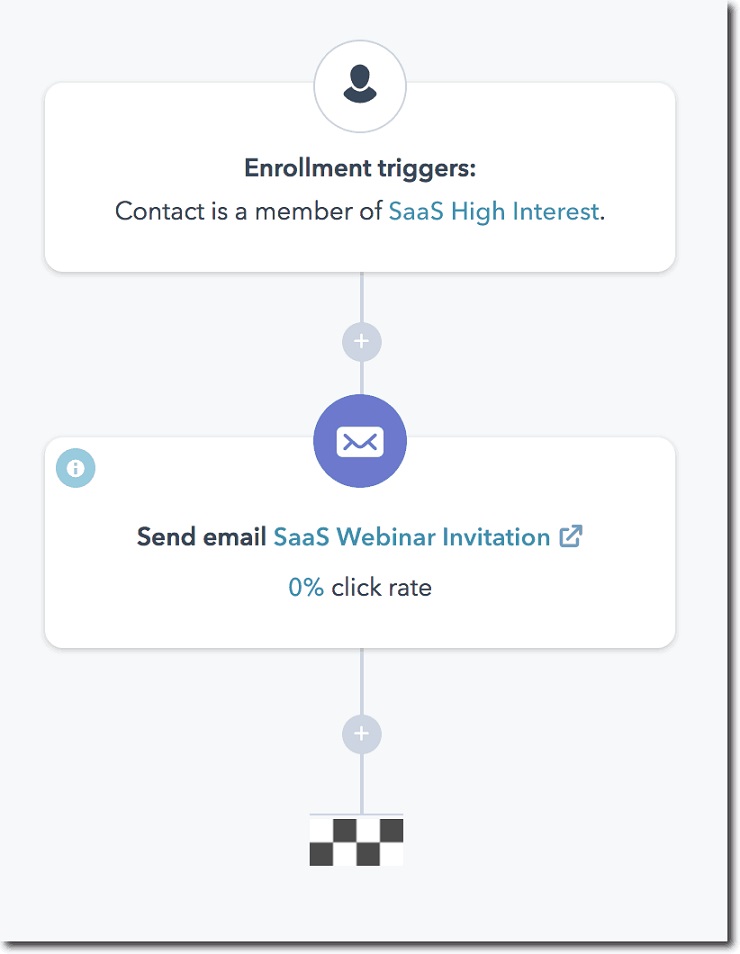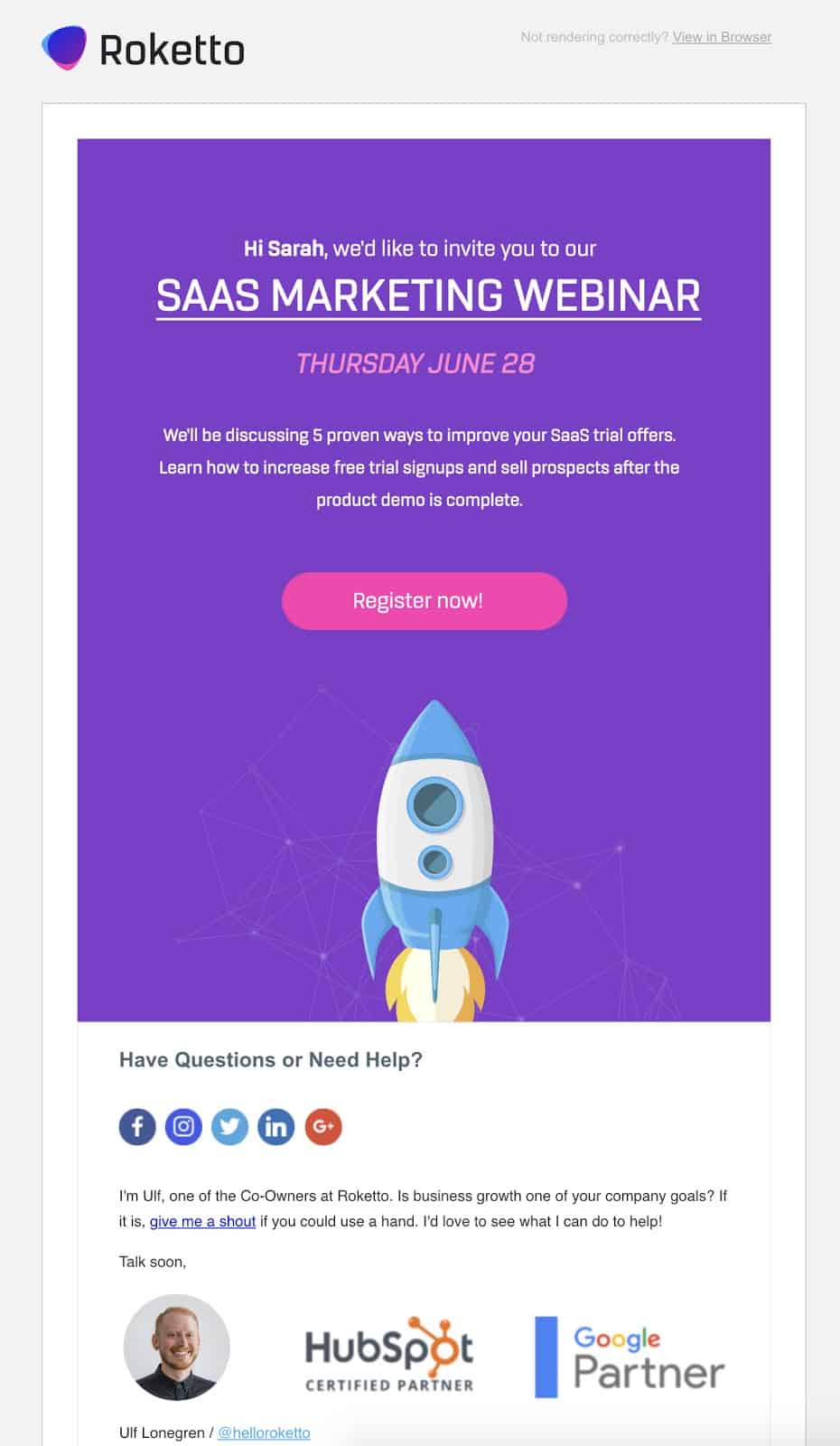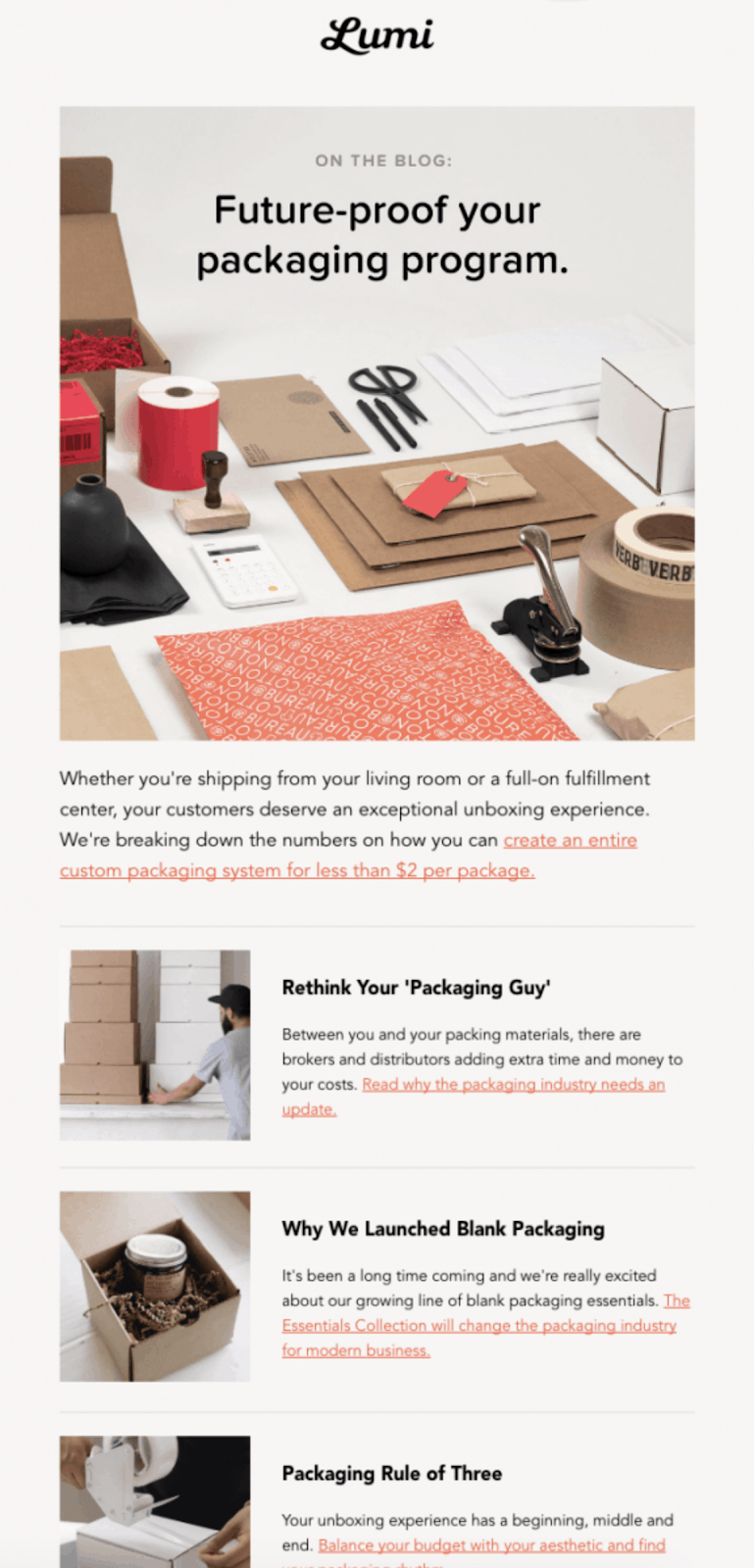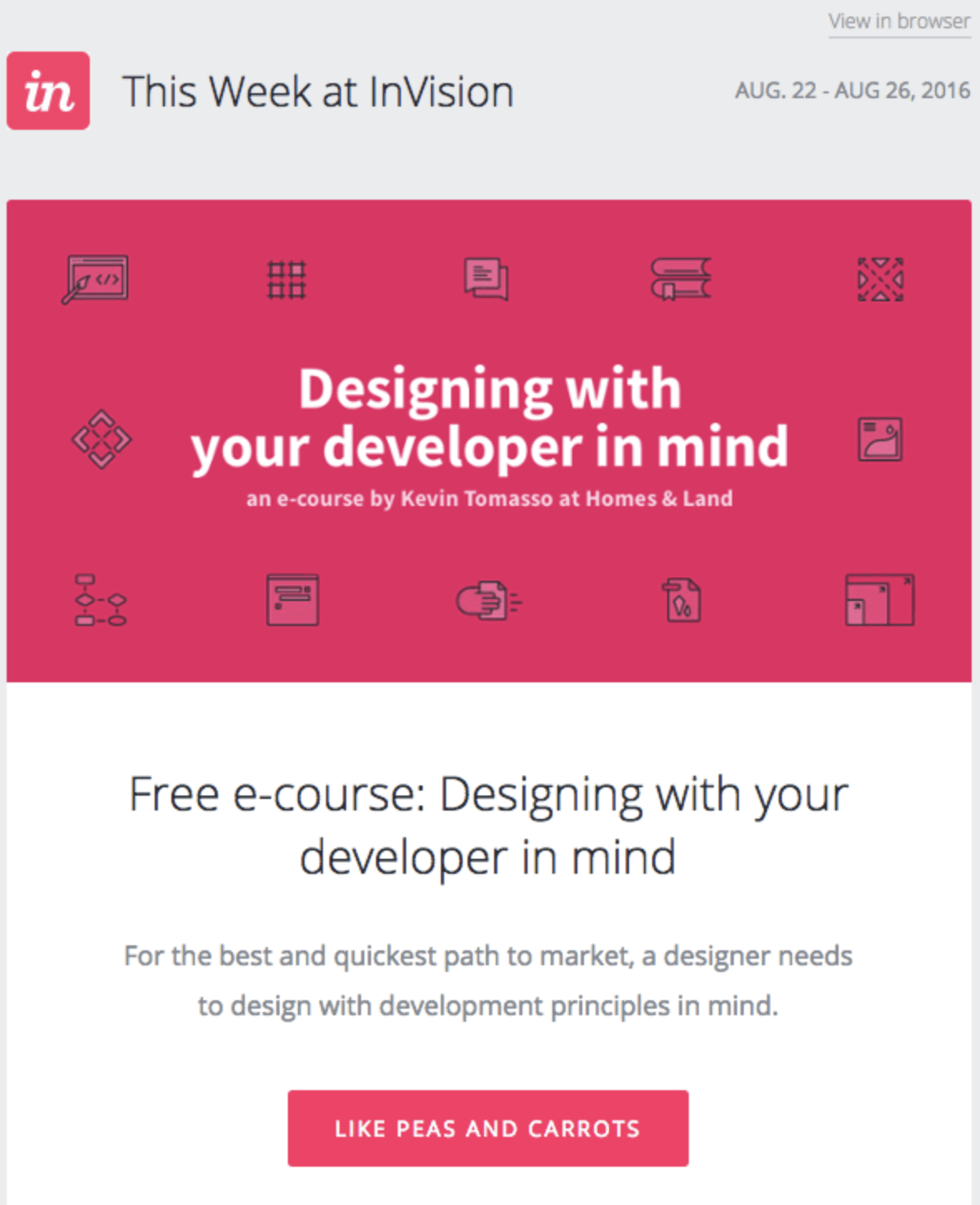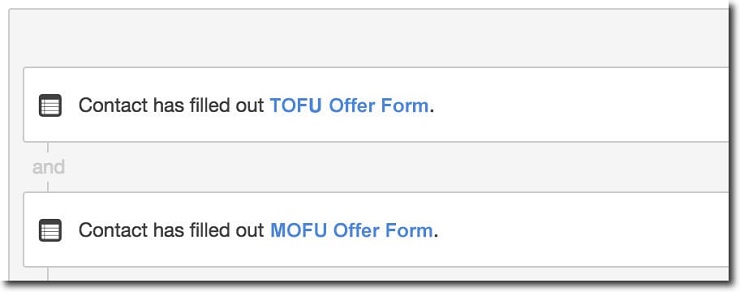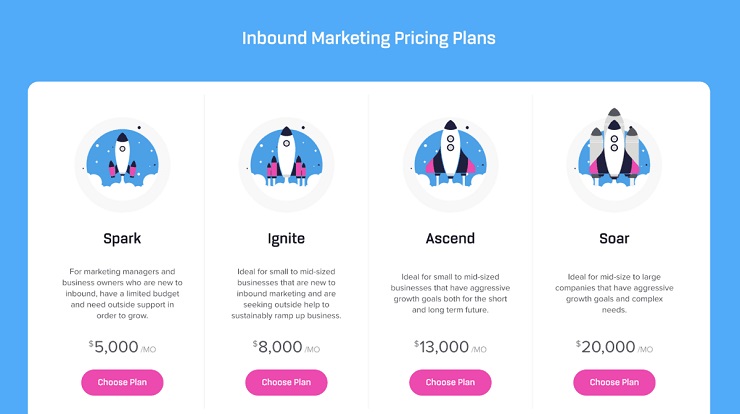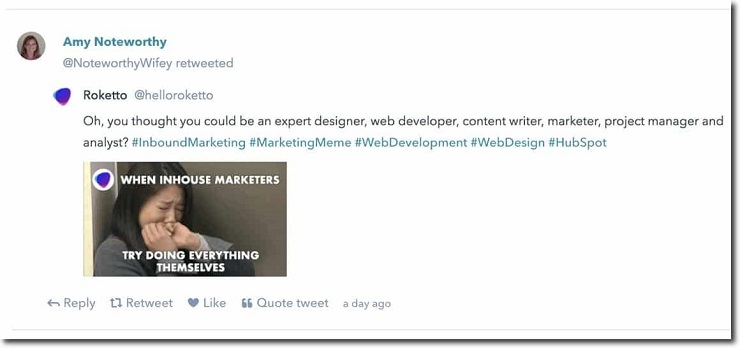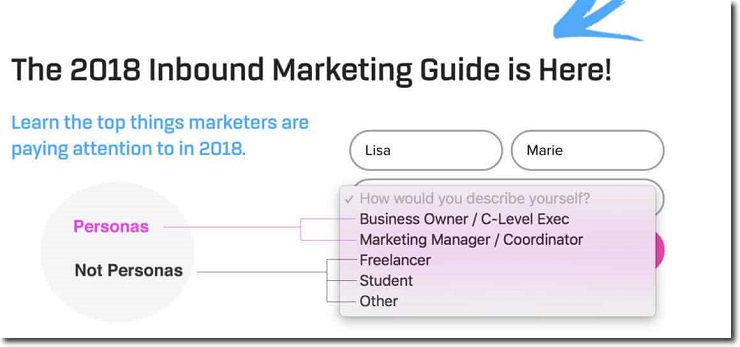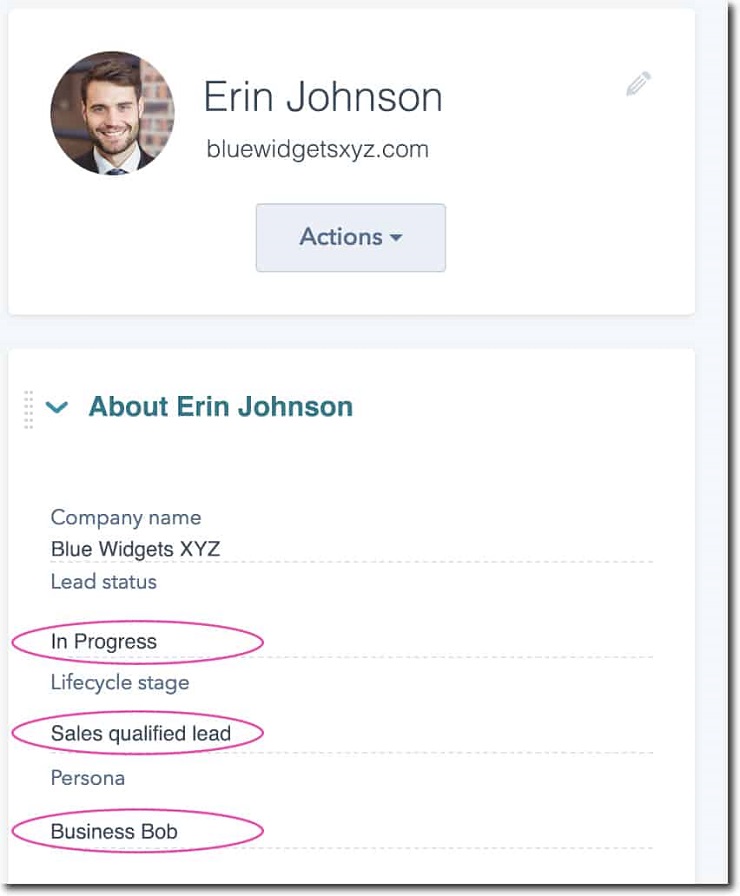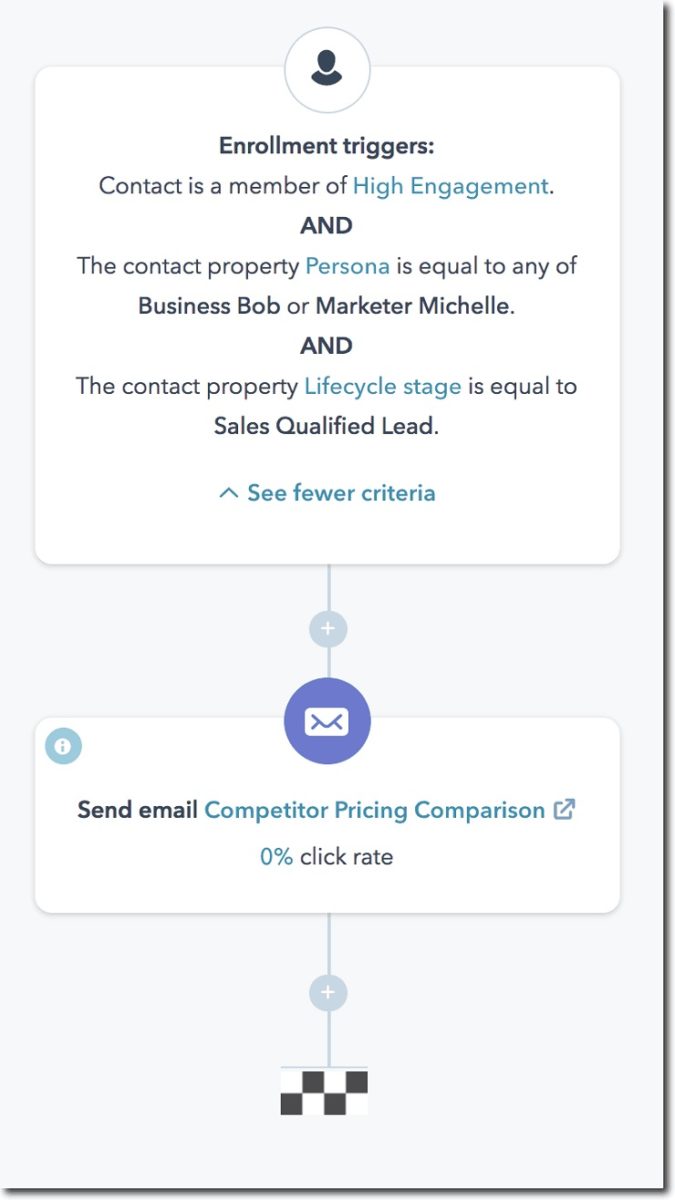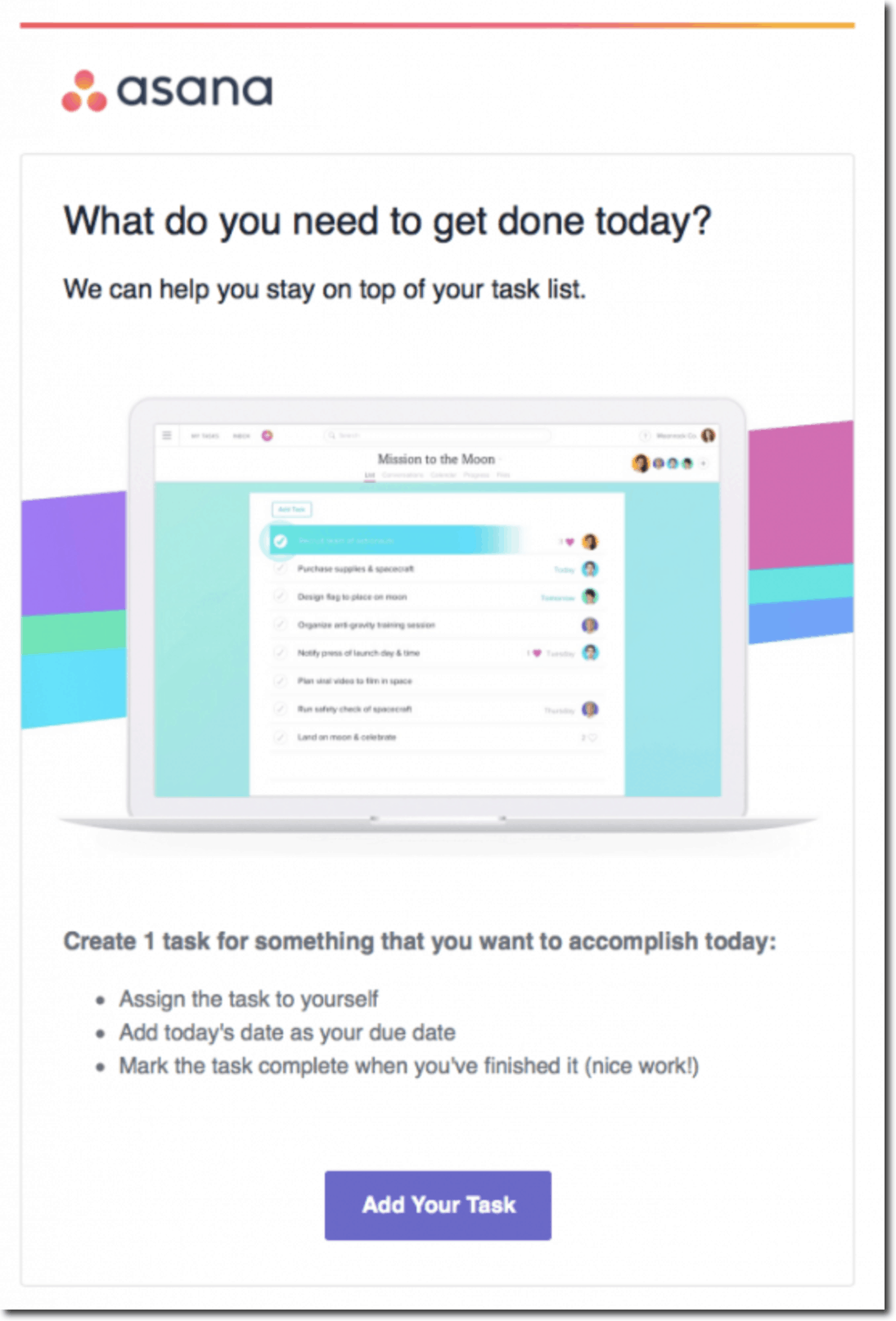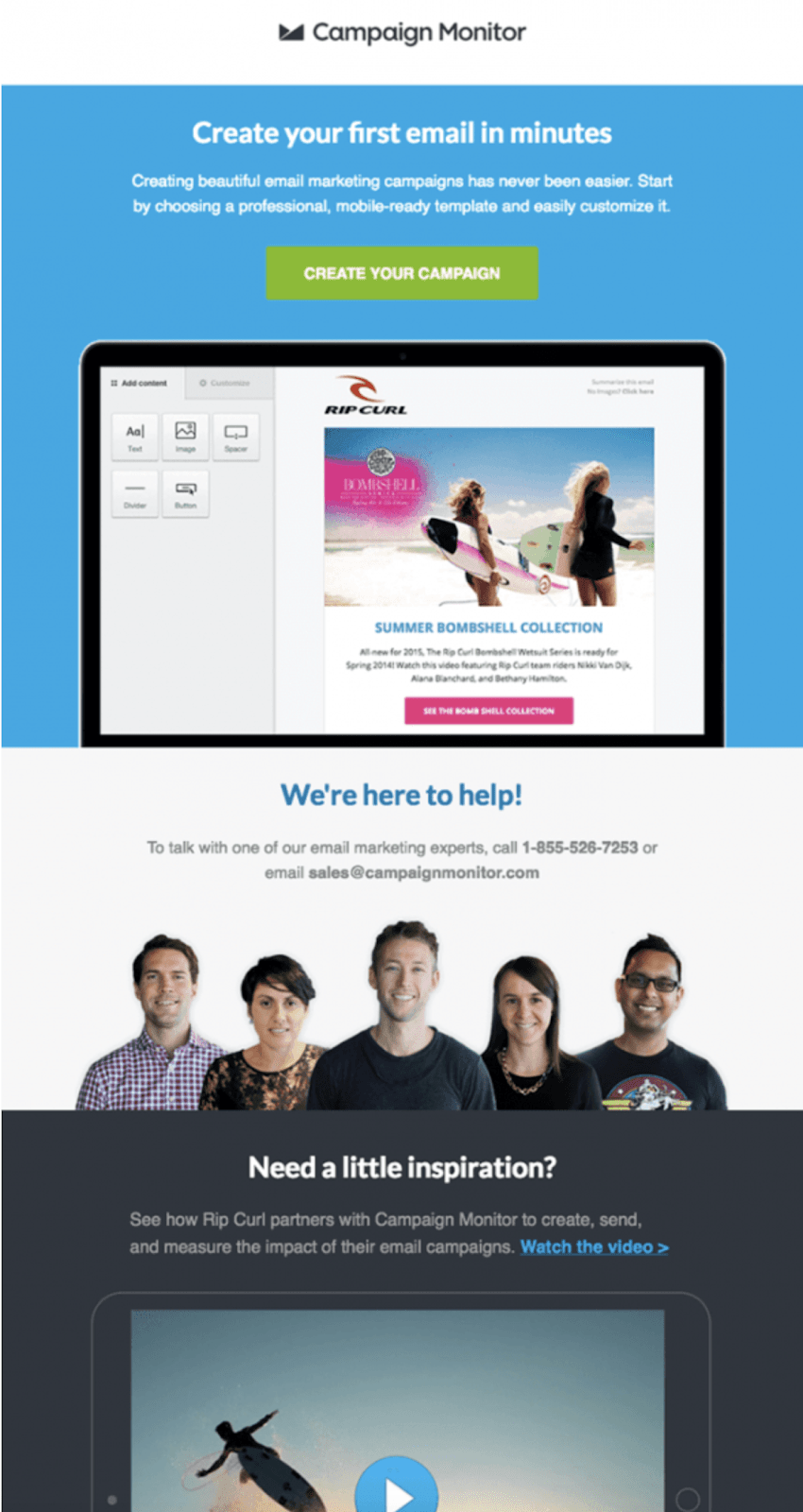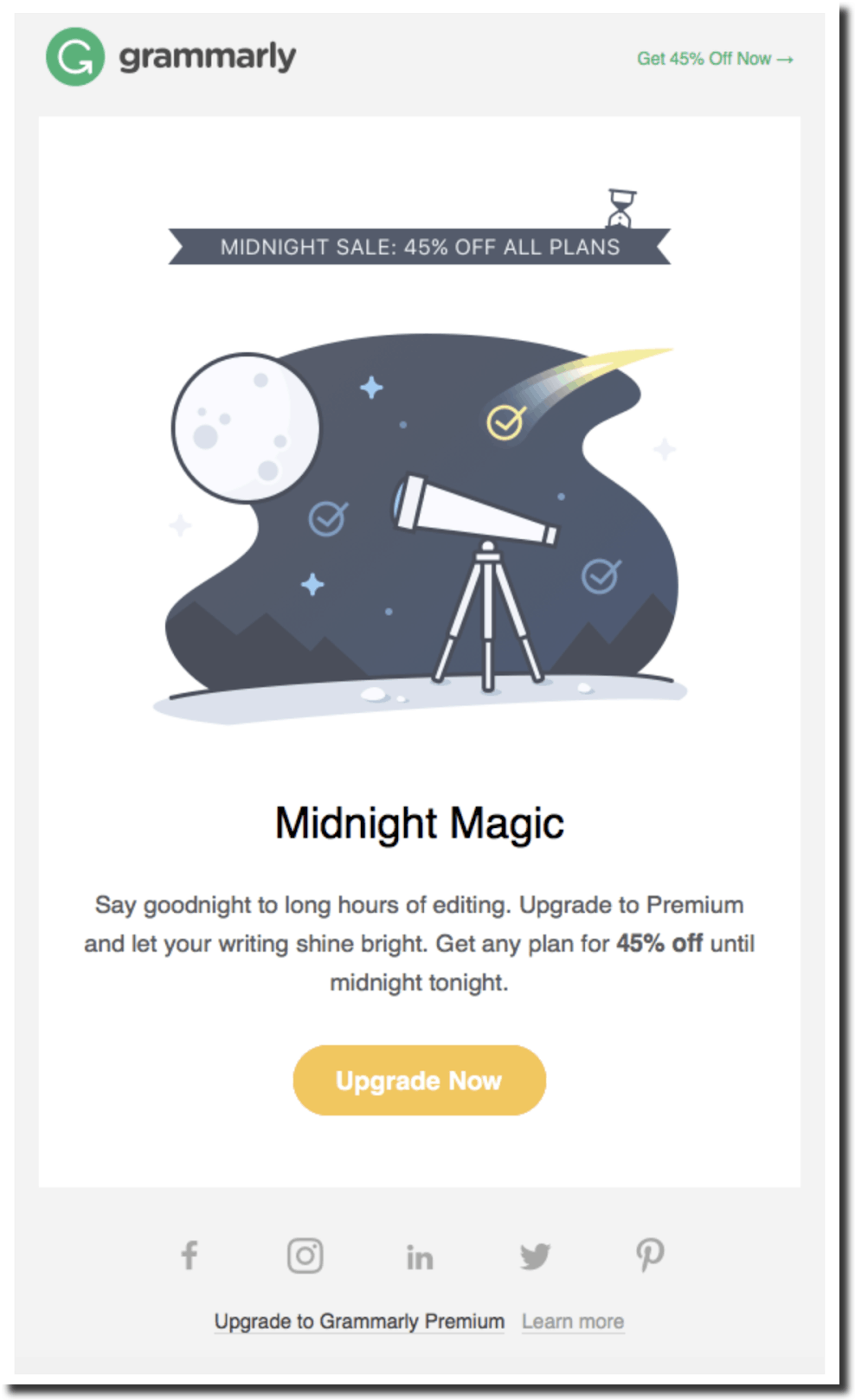When you’re a small, scrappy startup, it can feel like you never have enough time, never land enough leads, and never close enough sales. But if you put the power of email automation to strategic use, you can watch your bottom line grow as if you had a whole team of sales staff working overtime.
Email marketing automation delivers relevant, personalized messaging at key times, and helps startups appear as though they’re of the same size and scale as the big brands they’re often competing with.
However, automating anything can be risky.
It can be overwhelming to know where to start, how it’s going to bring your business actual value, and how to avoid sending annoying emails that completely miss the mark. If not done right, you could waste money, do more harm than good, and lose precious subscribers.
It’s time to put those fears aside.
You’ve put the time and work into building a subscriber base, now let’s leverage that list to grow your business. Read on to learn about two powerful email automation processes you can set up today to increase leads, sales, and customer loyalty.
At our inbound marketing agency Roketto, we like to use HubSpot as our email automation platform, but you should be able to accomplish the following strategies with most marketing automation tools.
The High-Interest Email: A Timely, Personalized Email That Moves Leads Closer to Buying
The “High-Interest Email” is a middle-of-the-funnel email automation that identifies engaged subscribers and begins the dialogue for discussing next steps. Automating these emails allows you to send timely, personalized messages based on user behavior, and thereby nudge them further down the process toward completing a purchase.
Let’s first consider the sales funnel, which consists of the different stages your prospects go through in becoming a paying customer. These stages are awareness, consideration, and decision. Middle of funnel content connects initial interest (top of the funnel) and the final sale (bottom of the funnel). It nurtures, educates, and helps prospects evaluate your brand and separate you from the competition.
Relevance is key in middle-of-funnel content and marketing communications as a whole. Think about every email you received today that you were not interested in. The reason? It wasn’t relevant enough, so you deleted it, unsubscribed, or marked as spam.
Now think about the last email that excited you when you opened it. It likely had meaningful content that was perfectly in line with your interests and seemed like it was made just for you. How did you react to it? There’s a good chance you clicked through to the website to learn more, purchased a product, or performed some other action to follow up on your interest.
The main challenge is that creating personalized, mega-relevant content can be time-sensitive. So how do we automate timely messaging without losing out on quality? This can be achieved by creating smart lists based on visitor behavior.
Paying attention to the content a subscriber is digesting on your website provides keen insights into their areas of interest, and what type of email will resonate best with them.
For example, if we see a contact has read four or more articles about SaaS marketing strategy on our website within the same week, day, or hour, we can feel confident they have a high interest in that content category. We could consider emailing them a relevant lead magnet, or an invitation to an upcoming SaaS marketing webinar.
You can target behaviors like this using smart lists, creating triggers to send prospects timely, personalized emails that will boost conversions.
List Criteria
Smart lists dynamically update themselves based on the rules you set, so the first thing you need to do is consider the criteria you’ll create:
You’ll first want to target a behavior that indicates high interest, so you can be sure you’re not taking a shot in the dark. The goal here is to wow the visitor with magnificent timing and relevance. Email marketing automation is powerful, but if you don’t align it with the recipient’s interests, you can easily annoy them, resulting in lost subscribers and damage to your brand perception.
If you publish material on your website around different topics, it’s important to keep your automated emails segmented to the correct audience. I like to target visitors who have viewed four or more pages within a certain category of our blog (SaaS in this example), as that should be enough to demonstrate high interest.
Visit frequency should also be taken into account, as four visits over a six-month period don’t exactly scream “high interest.” I like to set this at a four-week time span, but it really depends on what the average length of the sales cycle is for your business. If your average sales cycle is two months, set the “frequency” and “number of times” accordingly, so that you’ll be able to identify visitors with high interest.
Once the specified criteria are met, this subscriber will also automatically become a member of this list, which we’ll call “High SaaS Interest.” You will then use this newly created list as a trigger to send automated personalized emails to your prospects. All that’s left now to accomplish this is to put a workflow into place.
Learn how to skyrocket your email opens, clicks and sales! Take an in-depth journey into automation, deliverability, engagement and more in our Foundr course, Advanced Email Marketing. Click below to learn more and join our VIP waitlist to be notified when the course opens for enrollment.
Learn How to Skyrocket Your Email Opens, Clicks and Sales! Click To Join Our FREE VIP Waitlist Now.
The Workflow
Workflows are a beautiful thing. They’re what connects the criteria we set to the action we want to happen.
All email automation platforms will look and act a bit differently, but the theory in setting up workflows should always be very similar:
- Set criteria for the trigger (we did this in the last section)
- Define the action that will occur (what email will you send when the trigger has fired)
In this simple workflow, we’ve set our “High SaaS Interest” list membership as the trigger, and “SaaS Webinar Invitation email” as the action.
Now, whenever a subscriber shows high interest in the SaaS category of our blog, this trigger-based email marketing automation will send them an invitation to our next SaaS marketing webinar, giving us an opportunity to nudge them further down the sales funnel. All without us lifting a finger!
Examples
The focus of high-interest email automation is to convert subscribers into leads, educate them, and help move them down the funnel. Types of content that work great here include:
- Webinar invitations
- How-tos
- Guides
- Videos
- Free courses
- Tips and tricks
Roketto
In our own example below, you can see the webinar invitation that gets sent out at the end of our simple SaaS High-Interest workflow. This prompts the subscriber to take action and sign up for our next SaaS marketing webinar.
Lumi
In this example, Lumi highlights its step-by-step guide on future-proofing packaging systems. This is a high-quality email that is sure to receive high engagement to an audience showing interest in packaging and shipment platforms.
Invision
I love this email from Invision (an amazing tool we use here at Roketto) that invites subscribers to take the next step and sign up for a free online course. This provides a high-value offer with the only commitment required from the recipient being their time.
The High Engagement Email: An Automated Message to Close the Deal
The “High Engagement Email” is a bottom-of-funnel (BOFU) email marketing automation that identifies leads in the decision stage of the purchasing journey and provides key content to help them recognize you as the best solution.
Until this point in the funnel, you’ve probably been softly nurturing your prospect through their journey. You’ve been educating them, helping them solve their problems, providing free resources and insights, suggesting solutions, and more.
This is all fantastic, but there comes a critical point when the focus needs to shift from being “helpful” (top and middle of the funnel) to being “the best choice” (bottom of the funnel). You don’t want to warm a lead up to a solution just so your competitor can scoop them up.
In this section, we’ll discuss how to create smart list criteria that identifies the right time to reach out with bottom-of-the-funnel messaging, and some great examples of email automation that help seal the deal.
List Criteria
So how can you tell the right time to send sales-related email automation?
You’ll want to set rules for qualifying high-value prospects based on their engagement levels, and specific actions taken on the website. Here are some clear signs that a prospect is likely ready for a push:
Movement Along the Funnel
If the prospect has already completed top-of-funnel (TOFU) and middle-of-funnel (MOFU) actions, you’ll know they are likely prepared for the next step. These actions could include:
- Newsletter signups
- Engagement with tools and resources
- Viewing guides
- Whitepaper downloads
- Quiz submissions
- Webinar attendance
Checking Out Pricing
This is a big one.
Views on your pricing page are a strong indicator that a prospect is entering into the decision stage. If they have viewed your pricing page multiple times, or have spent long periods of time on this page, they’re likely ready to be contacted for a sale.
Making Conversation
Has the prospect reached out in any sort of communicative way? Are they asking questions, or probing for more information? Are they engaging in the discussions on your blog? Any and all communication actions from contacts should be considered as a factor for this list segmentation, including:
- Emails
- Web inquiries
- Phone calls
- Live chat messages
- Blog comments
Social Media Interactions
There are plenty of off-site signals that can help pick out quality prospects, and social media provides us with some great engagement data. Just remember, you’ll need this data within whichever automation tool you are using. Many marketing automation platforms have social monitoring functionality, and if yours doesn’t you can integrate a tool like Hootsuite to get the job done.
Actions to pay attention to here include the prospect:
- Following your social profiles
- Showing a high number of likes on your posts
- Frequently commenting on your posts
- Sharing and reposting your content
Once your contact has completed actions from at least three of the categories mentioned above, they are indicating high engagement and are likely ready to receive that juicy bottom-of-funnel email.
Diving Deeper with Lead Qualifiers
Everything you can do to qualify where the prospect is at in their journey will result in stronger relevance between the email and your prospect’s needs. Bottom of funnel, salesy emails won’t resonate as well if they aren’t ready for it.
In addition to the list criteria, you can consider using specific contact properties as additional qualifiers, if applicable. However, not all marketing automation tools have these features. If yours doesn’t, don’t worry! This section is meant to improve the High Engagement email automation, but is not required in order for it to work.
Lifecycle Stage
Where is the contact at in their journey in becoming a customer? This can depend on how your organization is set up to qualify leads, but regardless, this is where you want to target sales qualified leads (SQL’s), or however you label promising opportunities.
Lead Status
You’ll want to target contacts with a lead status who are ready for that push to become a customer. This could be an attribute such as “in progress” or even a percentage attribute of how far along the sales funnel they are.
Persona Matches
Marketing personas are fictional representations of your ideal customers, and are based on data and generalizations. Once you have your target audience clearly defined, you can better segment your email automation. You can even get your contacts to easily self identify which persona they are by subtly asking them to describe themselves when they sign up for your newsletter, use your contact form, or download an offer.
TIP: You don’t need to list out your actual customer persona names here (e.g. ours are called “Business Bob” and “Marketer Michelle”). Asking your contacts to describe themselves should seem natural to them, and you can tie their selections to whatever you call the persona in your marketing automation tool.
You’ll notice above, not all of the options are matches for marketing personas. It’s helpful to determine if a contact matches one of your marketing personas, or if they are just a happy subscriber. You’ll be able to hone in on exactly the type of content each persona likes to receive, and avoid situations like sending a sales-type email to a student who is simply interested in your content and resources for educational purposes.
The Workflow
The exact criteria will vary for each business, so it’s important to consider which details are necessary in order to determine what a qualified lead is for your company.
Before you build out your workflow, try running a filter with the criteria you’ll be using, so you can get an idea of the type of contacts that will be opted into this workflow. Do the contacts that show up seem like a perfect fit?
If you get excited at this step and it’s starting to feel a bit like magic, it’s probably time to finalize the workflow. If the contacts don’t look quite right, go back and adjust until you’re 100% happy with it. When in doubt, do more testing!
In this case, if a contact is a member of our “high engagement” behaviors list, matches one of our customer personas, and is a sales qualified lead, we can feel confident that they are a good candidate for this email automation.
Next, simply set up your triggers as per the criteria you have chosen to start your workflow, with the action being an automated bottom-of-the-funnel email.
Examples
A bottom-of-the-funnel email is where your business finally takes the spotlight. At this point, the prospect is fully aware of their problem, has identified the solution, and is evaluating the best option to move forward with.
The main objective here is to communicate to the prospect why you are the best option, and not your competitor. It will be most effective if you have a strong understanding of key influencers in their decision making, which is also likely to be listed in your customer personas.
Great examples of bottom-of-the-funnel automated emails include:
- Competitor pricing comparisons
- Case studies
- Promotional offers
- Checklists
- Comparison sheets
- Product demo or tour
Below are the great example of bottom-of-the-funnel emails.
Asana
In this example, Asana features simplicity and ease of use in their task management platform as a strong value proposition. Their call-to-action is focused on getting the recipient to create their first task in their system right away.
Campaign Monitor
In this email example from Campaign Monitor, they highlight two key items to influence contacts to get started:
Set up email quickly – This email starts with a call-to-action to easily set up a beautiful looking email in just minutes, using Campaign Monitor’s template builder. This is a great value proposition, since those new to email marketing platforms might be intimidated, especially if they are not technically savvy.
Support – They also make a strong mention of their support team being available to help with any needs the contact might have, listing an email address and a phone number. This provides confidence and builds instant trust.
Grammarly
In this example, Grammarly advertises a huge limited time discount. This can be a great way to instill urgency in leads who are showing high interest in your products or services, and give them that final reason they need to become a customer.
Learn how to skyrocket your email opens, clicks and sales! Take an in-depth journey into automation, deliverability, engagement and more in our Foundr course, Advanced Email Marketing. Click below to learn more and join our VIP waitlist to be notified when the course opens for enrollment.
Learn How to Skyrocket Your Email Opens, Clicks and Sales! Click To Join Our FREE VIP Waitlist Now.
Conclusion
Now that you have a full, in-depth understanding of how to create a high-interest and the high-engagement email marketing automation, it’s time to start driving more leads and sales. If you have any questions, let me know in the comments below and I’ll be happy to help!
